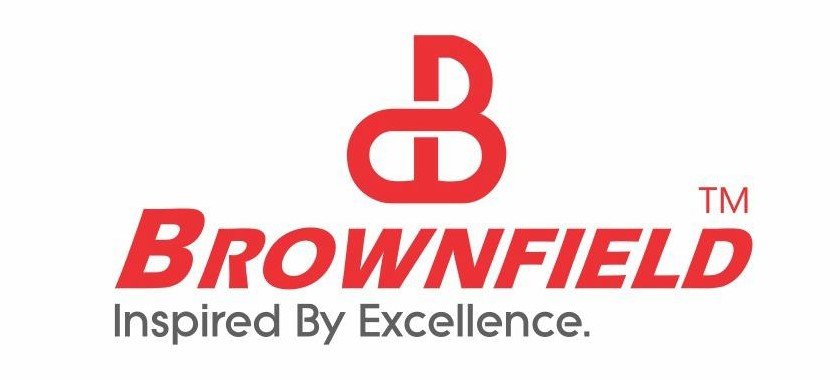In today’s agriculture, efficient water management is crucial for maximizing productivity and conserving resources. One of the most effective solutions farmers rely on is the sprinkler irrigation system. Whether it’s drip system sprinkler heads or irrigation sprinklers for farming, these systems are reshaping how water is delivered to crops.
Brownfield India, with its commitment to innovative flexible material solutions, understands the growing need for precision agriculture tools. Our products support the agricultural sector by complementing smart irrigation systems with durable films used in mulching, greenhouse covers, and protective packaging.
In this guide, you’ll learn everything about sprinkler irrigation—from its components and types to benefits, comparisons with other systems like drip irrigation, and answers to frequently asked questions.
What is a Sprinkler Irrigation System?
A sprinkler irrigation system is a method of applying water to crops in a manner similar to rainfall. It distributes water through a network of pipes by pumping it through sprinkler heads that spray the water into the air, which then falls on the field.
This system is ideal for a variety of crops and soil types and is commonly used in both large-scale and smallholder farming.
Key Components of Sprinkler Irrigation Systems
- Pump unit – Generates the required pressure for water distribution.
- Mainline and sub-mainlines – Carry water from the source to the field.
- Laterals – Smaller pipes that branch off from mainlines.
- Sprinkler heads – Devices that spray water in controlled patterns.
- Control valves – Regulate pressure and flow.
Advanced systems may also include:
- Timers and controllers
- Moisture sensors
- Pressure regulators
Types of Sprinkler Irrigation Systems
Sprinkler systems are versatile and come in several forms depending on the field size, crop type, and water requirements:
1. Portable Sprinkler Systems
- Easy to set up and move.
- Ideal for small farms or gardens.
2. Solid Set Systems
- Permanent piping with fixed sprinkler heads.
- Great for orchards and long-term crops.
3. Center Pivot Systems
- Large circular systems that rotate around a pivot.
- Common in large, flat fields like those growing cereals and grains.
4. Lateral Move Systems
- Move linearly across rectangular fields.
- Suitable for broad-acre farming.
5. Drip Irrigation Sprinklers / Drip System Sprinkler Heads
- Combine features of drip and sprinkler irrigation.
- Deliver low-volume, high-efficiency water distribution.
- Perfect for row crops, horticulture, and high-value crops.
Benefits of Sprinkler Irrigation in Agriculture
Using irrigation sprinklers for farming has numerous benefits:
Water Efficiency
- Reduces water wastage by targeting specific zones.
- Uniform water distribution across the field.
Increased Crop Yield
- Prevents under- or over-watering.
- Promotes consistent crop growth.
Time and Labor Savings
- Automated systems reduce manual work.
- Compatible with smart farming technologies.
Soil Preservation
- Minimizes erosion by gentle water application.
- Maintains proper soil structure and aeration.
Flexibility
- Works on uneven terrain and varying soil types.
- Adaptable to a wide range of crops.
Drip Irrigation vs. Sprinkler Irrigation: What’s the Difference?
Both are efficient systems, but they serve different agricultural needs.
| Feature | Drip Irrigation | Sprinkler Irrigation |
| Water Delivery | Direct to root zone | Sprayed like rainfall |
| Best for | Row crops, vegetables | Lawns, grains, large farms |
| Efficiency | High (up to 90%) | Moderate to high (70-85%) |
| Installation Cost | Moderate to high | Varies by type |
| Maintenance | Prone to clogging | Easier maintenance |
| Compatibility with Films | Excellent with mulch and row covers | Excellent for open-field coverage |
For maximum efficiency, some farms integrate drip irrigation sprinkler heads to achieve precise delivery with broad coverage.
How Sprinkler Irrigation Supports Sustainable Farming
Sustainable farming is all about producing food while conserving environmental resources. Sprinkler irrigation aligns with this goal by:
- Reducing over-irrigation and runoff
- Improving nutrient uptake by preventing leaching
- Allowing for fertigation, or fertilizing through irrigation
- Supporting smart agriculture through sensors and automation
Brownfield India’s high-performance films for soil covers, greenhouses, and tunnel farming enhance the benefits of sprinkler systems by protecting crops and optimizing microenvironments.
Applications of Sprinkler Irrigation Systems
Sprinkler systems are widely used across:
- Horticulture (fruits and vegetables)
- Cereal crops (wheat, rice, corn)
- Industrial crops (cotton, sugarcane)
- Orchards and plantations
- Greenhouses and polyhouses
They are also effective in frost protection, humidification, and pest control in controlled environments.
Best Practices for Using Sprinkler Irrigation
To maximize efficiency and crop yield, follow these practices:
- Schedule irrigation during cooler hours to reduce evaporation.
- Inspect nozzles regularly to prevent clogging or uneven spray.
- Use pressure regulators for uniform distribution.
- Install filters to avoid debris damage.
- Pair with mulch films for enhanced moisture retention (available from Brownfield India).
Choosing the Right Sprinkler System
Consider the following when selecting a system:
- Crop type and growth stage
- Soil texture and infiltration rate
- Water availability
- Budget and scale of farming
- Climate and wind conditions
High-quality drip irrigation sprinklers and sprinkler heads can be integrated with existing setups for optimal flexibility and return on investment.
FAQs About Sprinkler Irrigation Systems
1. What is the difference between drip irrigation and sprinkler irrigation?
Drip irrigation delivers water directly to plant roots using emitters, minimizing evaporation and runoff. Sprinkler irrigation mimics rainfall and covers a wider area, making it suitable for larger fields.
2. Can sprinkler systems be used in all soil types?
A: Yes, but adjustments in nozzle size and water pressure may be necessary. Sandy soils may require frequent watering, while clay soils need lower application rates to avoid runoff.
Final Thoughts: Embrace Efficient Irrigation with Brownfield India’s Support
A sprinkler irrigation system is a smart investment for modern farmers aiming to improve productivity, conserve water, and ensure crop health. Whether you’re exploring drip irrigation sprinkler heads for precision or irrigation sprinklers for farming large fields, integrating these systems with high-quality films can greatly enhance their benefits.
At Brownfield India, we support sustainable agriculture through innovative flexible materials designed to work seamlessly with smart irrigation systems. Contact us today to learn how our agricultural films can complement your irrigation solutions.
Ready to boost your farm’s efficiency? Get in touch with Brownfield India for customized film solutions that support modern irrigation systems and long-term success.


